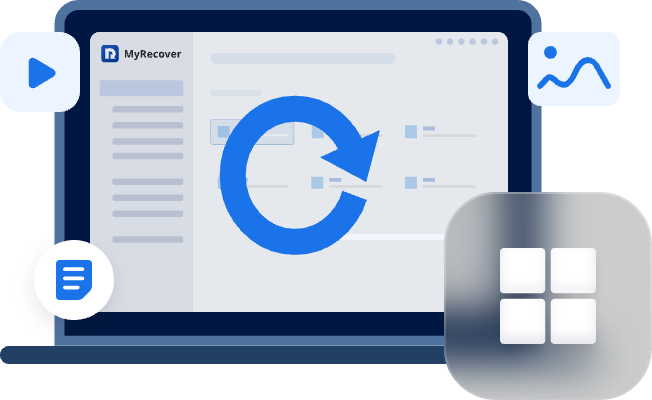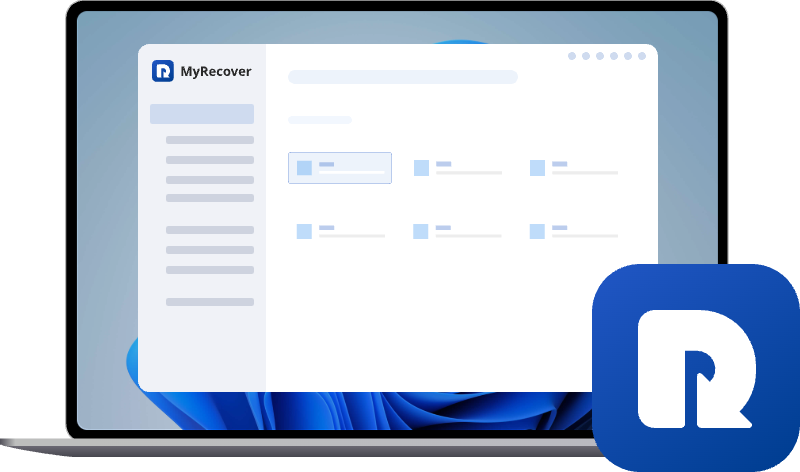Can System Restore Point Recover Deleted Files? What You Need to Know
Many users ask: "Does System Point recover deleted files?" The short answer is no—System Restore primarily reverts system settings, not personal files. This guide will cover everything you need to know about system point and how to recover deleted files in windows.
Overview: System Restore and Restore Point
System Restore is a vital recovery mechanism integrated into Windows that utilizes "restore points" to preserve your system's functional state. These restore points serve as digital safety nets by:
- Capturing Snapshots of Critical System Files
System Restore preserves essential operating system components, including DLL files, executable files, and configuration files that keep Windows running smoothly.
- Documenting Registry Settings
All changes to the Windows Registry, which controls system and application configurations, are meticulously recorded, allowing reversal of problematic modifications. Check how to recover deleted registry files if necessary.
- Archiving Driver Configurations
Hardware driver versions and their settings are preserved, enabling recovery from faulty driver updates or installations.
- Monitoring System Changes Over Time
The feature maintains a timeline of system alterations, creating restore points at significant moments to provide multiple recovery options.
Can System Restore Point Recover Deleted Files?
Does Restore Point recover deleted files? Unfortunately, the answer is NO. System Restore is designed to fix system problems, not recover personal data. It works by reverting system files to an earlier state, not by restoring deleted items.
✔️What System Restore Actually Recovers:
- System files and Windows settings
- Installed applications and drivers
- Registry changes
- System stability configurations
❌What It Doesn't Recover:
- Your personal documents, photos, or media files
- Emails or downloaded files
- Any user-created content in folders like Documents, Pictures, etc
What Can Recover Deleted Files?
Since System Restore cannot recover deleted personal files, you'll need alternative solutions. Below we outline three effective methods to retrieve lost data, each with step-by-step instructions for your reference:
First you can check the Windows Recycle Bin. If the deleted files are there, you can easily restore them to the original location. However, if you delete files using Shift+Delete combination or delete files from USB flash drive / SD card, they will skip the Windows Recycle Bin. Thus, browse through the following methods.
Method 1. Try File History [Windows Backup Tool]
File History is a built-in Windows backup feature that automatically saves versions of your personal files to an external drive or network location. Unlike System Restore, it focuses on user data rather than system files.If you enabled File History and added the deleted files /folders into the backup plan prior to deletion, take the following steps to recover them.
Step 1: Access File History Settings
Open Windows Settings (Win + I), go to Update & Security > Backup, then click "More options" under File History settings.
Step 2: Restore Files from Backup
Click "Restore files from a current backup" to open the File History interface where your backed-up files are displayed.
Step 3: Browse Backup Versions
Use the left/right arrows at the bottom to navigate through different backup dates and times, then double-click folders to view their contents.
Step 4: Select & Restore Files
After locating your files, select them and click the green restore button, then choose whether to restore to the original location or a new location.
Method 2. Use Windows File Recovery [Developed by Microsoft]
Windows File Recovery is a command-line utility offered by Microsoft to recover permanently deleted files from storage devices. Unlike File History, it doesn't require pre-configured backups but demands technical proficiency. If your files were deleted from Recycle Bin or external drives, follow these steps:
Step 1: Download and Install
Access toMicrosoft Store, search for Windows File Recovery. Click "Download"to get it and follow the prompts to install this tool on your computer (note: this tool only works on Windows 10 and later).
Step 2: Launch Command Prompt as Administrator
Press Win + X to open the Power User menu, select "Terminal (Admin)"if you are using Windows 11or "Command Prompt (Admin)"on Windows 10.
If prompted by UAC, click "Yes" to grant administrator rights.
Step 3: Select Recovery Modeand Run Recovery Command
Choose a scan mode based on your scenario: "Regular" for recently deleted files (NTFS drives) and "Extensive" for formatted drives/long-term deletions.
For example: recovery PDF files from G: partition to D: partition
Winfr G: D: /extensive /n *.pdf
Type the command and press on Enter. Press "Y" to confirm and wait for completion.
Step 3: : Verify Recovered Files
Check the target drive for a "Recovery_[date]" folder containing restored files.
Method 3. Employ Third-party Recovery Tool [MyRecover]
For simpler alternatives, consider third-party tools like MyRecover. This software provides a superior recovery experience with these outstanding over File History and Windows File Recovery:
✅ No Backup Required: Recovers files even without prior backups (unlike File History)
✅ Graphical Interface: Simple point-and-click operation (vs. complex commands in Windows File Recovery)
✅Deeper Scans: Advanced algorithms retrieve more files, including: permanent deletions (Shift+Delete), formatted/lost partitions, corrupted SD cards/USB drives, virus attack, power failure, system crash.
✅ Preview Before Recovery: Visually verify files before restoring them to the destination drive.
✅ Broader Compatibility: Works seamlessly with all edition of Windows 11, 10, 8.1/8, 7 and Server.
Step 1. To get started, download MyRecover from the official website and install it on a separate drive from where your files were lost to avoid overwriting data.
Step 2: Launch the software and select the specific drive or folder where your files were deleted, then click "Scan" to initiate the scanning process.
Step 3: After the scanning, you can use the software’s filtering options to narrow down results by file type (documents, photos, videos, etc.) for easier browsing.
Step 4: Tick the files or folder you want to recover and click "Recover" button. Before recovery, preview files to ensure they’re intact.
Step 5: Choose a safe destination (such as an external drive or a different partition) to avoid overwriting lost data.
After recovery, open and check a few files to confirm they are working properly and not corrupted.
Bottom Line
So, stay clam even if you get a negative answer to the question, "can Restore Point recover deleted files". The above alternative recovery methods can help recover deleted personal files on Windows 11 or Windows 10. For best result, MyRecover is a better choice, since it retrieves lost music, video, documents, photos, and more with just a few clicks no matter why they get lost. Besides, its intuitive interface, deep scan technology, and file preview feature ensure you recover exactly what you need.


